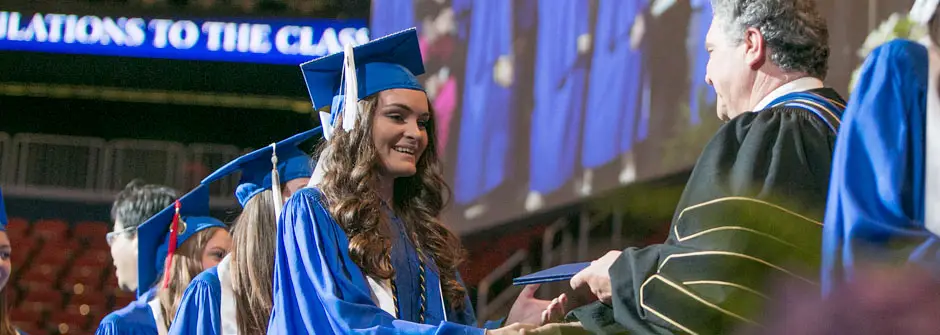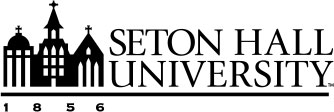
Loan Information
Direct Loans
Direct loans are low-interest loans for students offered by the U.S. Department of Education. Repayment for subsidized and/or unsubsidized loans begins six months after any of the following:
- Graduation
- Upon termination of an academic program
- After enrollment drops below half-time status
Requirements to Receive Direct Loans
Students are required to complete certain steps in order to receive Direct Loans. If a student is missing any of these steps, they will not be able to receive their loans.
- Complete a FAFSA at https://studentaid.gov/h/apply-for-aid/fafsa
- Determine the type(s) of loans to borrow and how to receive them.
- Once the student receives their financial aid package, they can accept any subsidized
(undergraduates only) or unsubsidized (undergraduates and graduates) loans via PirateNet.
- Direct Loan Instructional Guide
- Here is a helpful video that will walk you through the process of accepting or declining your student loans.
- Students and parents can borrow additional Federal loans called Direct PLUS Loans.
These types of loans must be applied for separately from the FAFSA application, as they require a credit check.
You can find more information about this further down this page.
- Once the student receives their financial aid package, they can accept any subsidized
(undergraduates only) or unsubsidized (undergraduates and graduates) loans via PirateNet.
- Complete the appropriate Entrance Counseling for your grade level.
- Entrance Counseling lasts for life once completed, but if you completed Entrance Counseling
during your undergraduate degree and are now pursuing a graduate degree, you will
need to fulfil this requirement again for the graduate level.
- Entrance Counseling lasts for life once completed, but if you completed Entrance Counseling
during your undergraduate degree and are now pursuing a graduate degree, you will
need to fulfil this requirement again for the graduate level.
- Complete the appropriate Direct Loan Master Promissory Note(s)
- MPN’s are required for the borrower to complete for each type of loan
- One type of MPN covers subsidized and unsubsidized loans; one only covers Parent PLUS, and another type only covers Graduate PLUS.
- Please ensure that you are completing all applicable MPNs for your loans.
- MPN’s typically last ten years, but these may be required again earlier for PLUS Loans
after a credit denial that is later approved. You will be notified by the Department
of Education if this is necessary for you to complete this again.
- MPN’s are required for the borrower to complete for each type of loan
- Once you are no longer attending courses (graduation, withdrawal, termination) or
are attending less than half-time, you must complete Direct Loan Exit Counseling
- You can read more about this in our Exit Counseling Information guide.
PLUS Loans
The U.S. Department of Education offers a loan program called the Federal Direct Parent PLUS Loan (PLUS). These come in the form of either Parent PLUS or Graduate PLUS Loans. They are subject to origination fees, meaning that the Department of Education deducts a percentage of whatever you borrow as a fee for the processing of the loan. As such, you will receive slightly less than the amount you request. You can find more information about origination fees here.
Direct Parent PLUS Loan
Parents can borrow a PLUS loan to help pay for a student's educational expenses if they are a dependent (per FAFSA’s definition), undergraduate student, enrolled at least half-time. Parents must be deemed creditworthy through a credit check to receive the loan. If a parent is denied a request for a PLUS loan, the student may be eligible for an additional Direct Unsubsidized Loan.
*** Beginning July 1st, 2026, new Parent Plus Loan borrowers will be limited to $20,000 annually and a new aggregate limit of $65,000.
- Need help to determine the amount needed for your Loan? Use our origination fee calculator.
- Parent PLUS Loan Application *Apply after July 1st*
- Appeal/Endorse the Parent PLUS loan if your credit check was denied.
Direct Graduate PLUS Loan
This program is now only available for Graduate and professional degree students who were enrolled in their Graduate/professional program prior to July 1st, 2026. These students are eligible to use Grad PLUS loans until they finish your program (or for up to three years, whichever is shorter). Students who were not enrolled prior to July 1st, 2026 in their program will not be eligible for this loan type, but can still utilize unsubsidized or private loans.
- Need help to determine the amount needed for your Loan? Use our origination fee calculator.
- Grad PLUS Loan Application *Apply after July 1*
Other Loan Options
Private Student Loans
A private student loan is a loan through private companies like banks or credit unions. These are typically borrowed in the student's name, but some lenders also offer options for relatives to borrow the loan in their name on the student's behalf. Private loans help bridge the gap between the actual cost of your education and the limited amount the government allows you to borrow in its programs. Eligibility for private student loans often depends on your credit score.
- Seton Hall University uses ELMSelect to assist students who need additional funding. Learn more >>
Federal Nursing Faculty Loan Program
The purpose of the Nurse Faculty Loan Program (NFLP) is to increase the number of qualified nursing faculty by providing loans to students enrolled in an advanced education nursing program. The interest on this loan is 3%. After graduation from the advanced education nursing degree program, loan recipients may cancel up to 85 percent of the NFLP loan over a consecutive 4-year period while serving as full-time nurse faculty at a school of nursing.
- For additional information, reach out to the College of Nursing and School of Health and Medical Sciences

